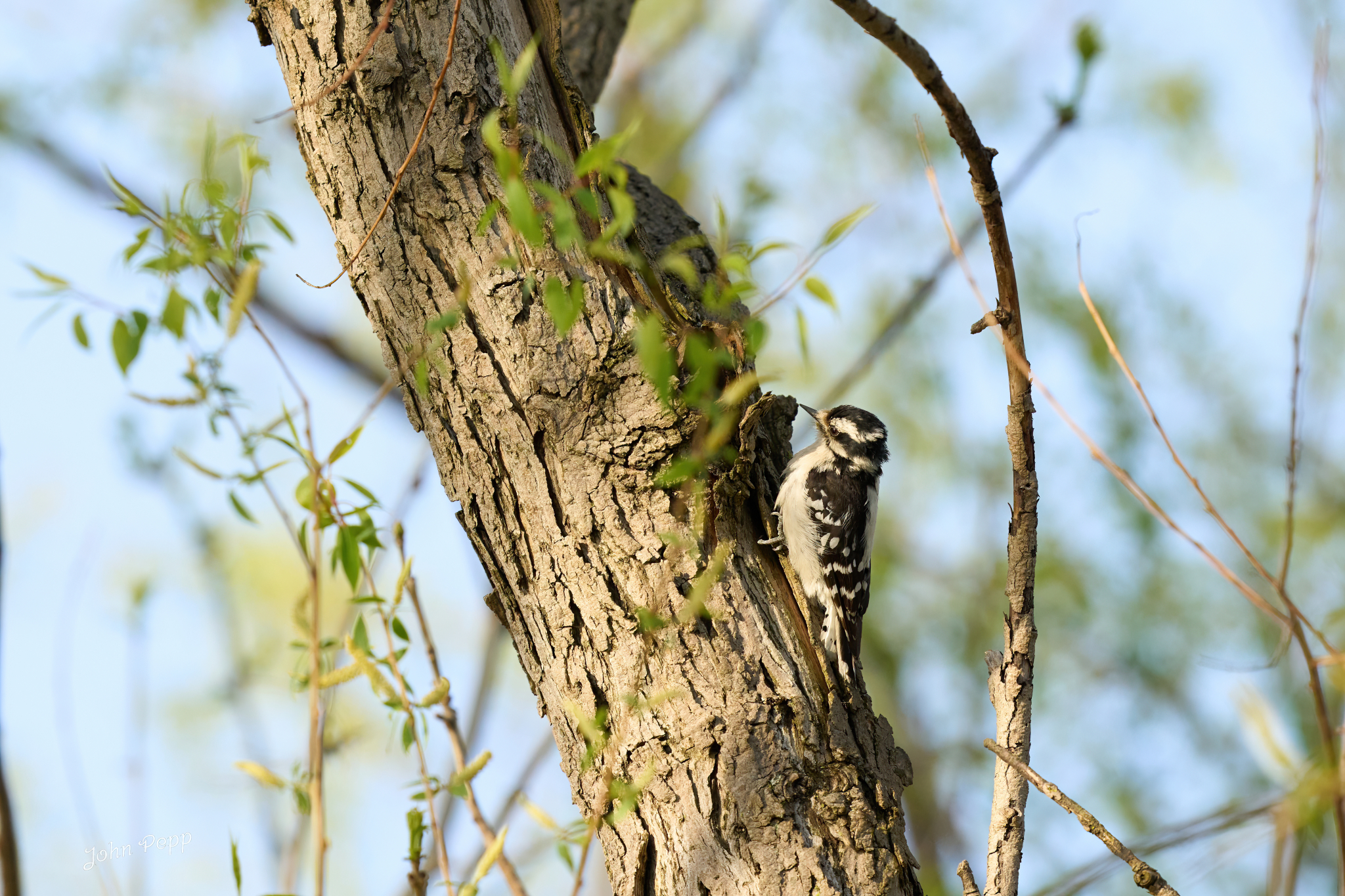The Downy Woodpecker (Dryobates pubescens) is the smallest woodpecker species in North America and a member of the family Picidae. Its range extends across most of the United States and Canada, excluding the far north and some parts of the southwestern US. Downy Woodpeckers are commonly found in a variety of wooded habitats, including deciduous and mixed forests, as well as suburban and urban areas with trees.
Physical Characteristics:
The Downy Woodpecker measures about 5.5 to 6.7 inches (14-17 cm) in length, with a wingspan of approximately 9.8 to 11.8 inches (25-30 cm) and a weight of 0.7 to 1.0 ounces (21-28 grams). Both sexes have black-and-white plumage, with a black back and wings that feature white bars, a white belly, and a white patch on the back of their heads. The males have a distinctive red patch on the back of their heads, which is absent in females. Their short, stout bills are well-adapted for pecking and excavating wood.
Behavior:
Downy Woodpeckers are agile and acrobatic, often seen hopping on tree trunks and branches in search of insects and larvae. They primarily feed on insects, including beetles, ants, and caterpillars, but also consume fruits, berries, and seeds, particularly during the winter months. These birds are known for their drumming behavior, which is a form of communication and a means of establishing territory.
Song and Calls:
The Downy Woodpecker's call is a sharp, high-pitched "pik" or "whinny" sound. Their drumming is a rapid, even series of taps on a tree trunk or branch, which can be heard throughout the year.
Breeding and Nesting:
Downy Woodpeckers are cavity nesters, excavating their nests in dead or dying trees or limbs. The female typically lays 4 to 5 white eggs, which are incubated by both parents for about 12 days. After hatching, the chicks remain in the nest for approximately 18 to 21 days, with both parents sharing feeding duties.
Conservation Status:
The Downy Woodpecker is classified as a species of Least Concern by the IUCN Red List. Its population is widespread and stable, with some regional fluctuations due to habitat loss or degradation. Conservation efforts focus on preserving and maintaining suitable habitats and protecting nesting sites from disturbance.
Downy Woodpecker
